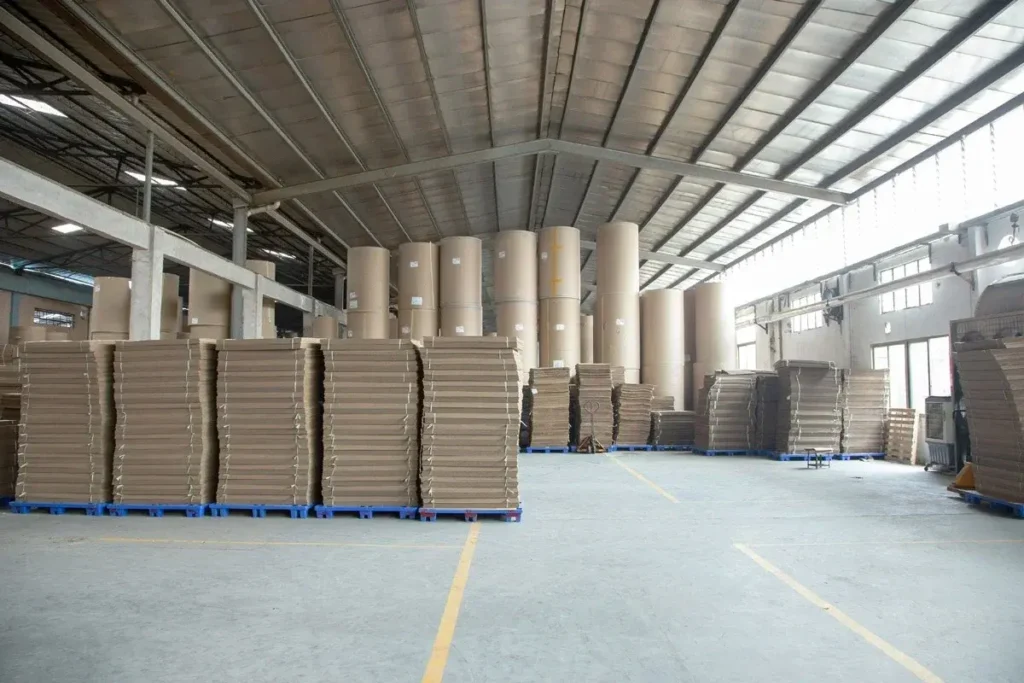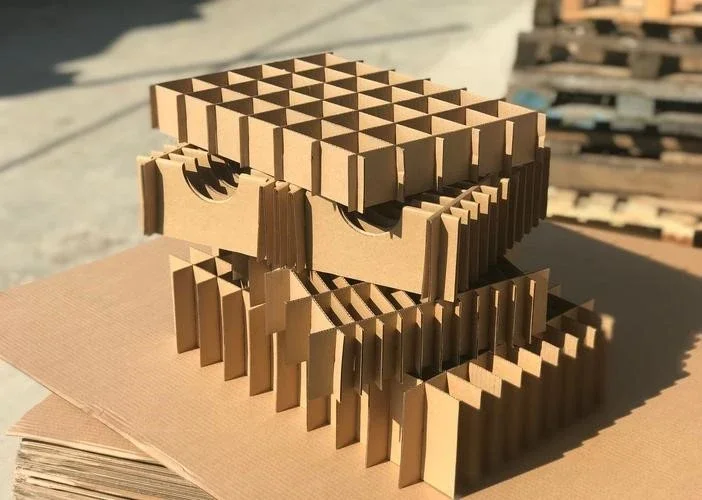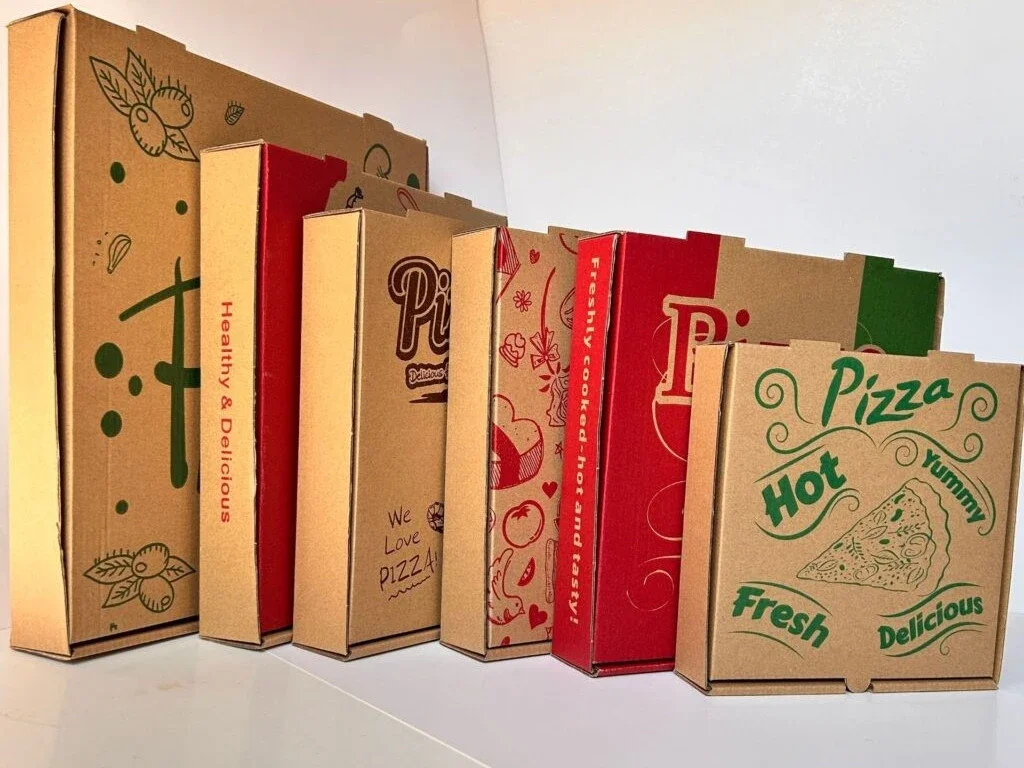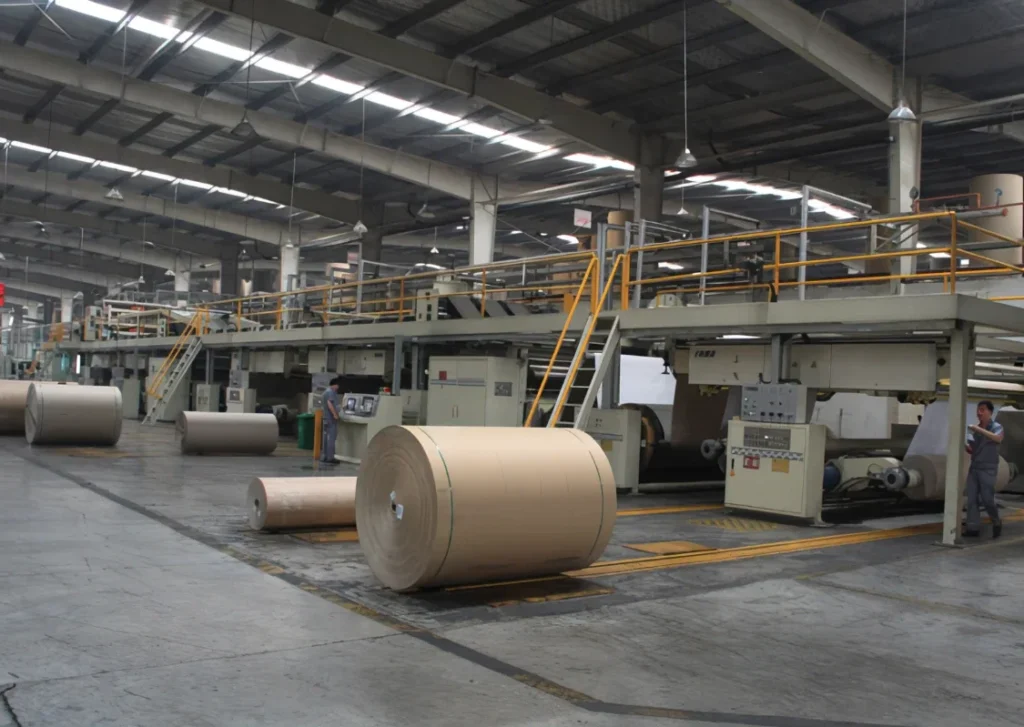What is a cardboard factory? How is cardboard made? Is this industry still profitable in today’s market? Whether you are an international buyer, packaging distributor, or sourcing agent, understanding how a cardboard factory works can help you make better procurement decisions.
In this article, we’ll cover how a cardboard factory operates, what kinds of boxes are produced, what affects pricing and lead time, and what to look for when sourcing from overseas—especially from China, which dominates the global supply of corrugated packaging.
What Is a Cardboard Factory?

A cardboard factory is a manufacturing facility that produces corrugated cardboard sheets and boxes used in packaging. The core products include:
- Corrugated shipping boxes
- Folding cartons
- Die-cut boxes
- Custom printed boxes
Cardboard factories typically operate in two major phases:
- Corrugating Phase – where raw paper rolls are turned into corrugated board.
- Box Converting Phase – where sheets are cut, folded, printed, glued, and packed into finished boxes.
Most factories integrate both processes for higher efficiency and cost control.
Cardboard Factory Types
There are several types of cardboard factories based on their operations and position in the supply chain:
| Factory Type | Description |
|---|---|
| Corrugating Plant | Manufactures corrugated cardboard sheets from paper rolls using a corrugator machine. |
| Converting Plant | Cuts, prints, folds, and glues cardboard sheets into boxes. May purchase pre-made sheets. |
| Integrated Factory | Includes both corrugation and box converting processes. Offers full customization. |
| OEM/ODM Export-Oriented Factory | Focused on export markets, often with multilingual teams and international certifications. |
For international buyers, integrated or OEM factories are preferred because they handle the entire process in-house, ensuring better control over cost, quality, and lead time.
How to Make Cardboard in a Factory: The Manufacturing Process
Cardboard production involves multiple steps and specialized equipment. Here’s how it works in a standard corrugated box factory:
1. Raw Material Preparation
Factories source kraft paper (virgin or recycled) as the primary material. Common GSM (gram per square meter) for liners and mediums range from 120gsm to 250gsm.
2. Corrugation Process
Large corrugating machines (corrugators) combine liner paper and fluted paper using heat and starch-based adhesives.
- Single wall: 1 flute + 2 liners
- Double wall: 2 flutes + 3 liners
- Triple wall: 3 flutes + 4 liners
3. Sheet Cutting & Stacking
Corrugated boards are then cut into sheets of required sizes for further conversion.
4. Printing (Flexographic or Digital)
Many factories offer flexo printing for branding, barcodes, or instructions.
5. Die-Cutting, Gluing, Slotting, Folding
Boxes are formed into shapes using die-cutting machines, and glued or stitched as needed.
6. Quality Control & Packing
Finished boxes undergo drop tests, burst tests (BCT), and edge crush tests (ECT) based on international standards like ISO or ASTM.
Types of Boxes Made in a Cardboard Factory
Here are common styles produced:
| Box Type | Description |
|---|---|
| Regular Slotted Carton (RSC) | Most common, flaps meet in center |
| Die-Cut Box | Custom shape, precision cutting |
| Heavy-Duty Box | Double/triple wall for export/shipping |
| Display Box | Retail-ready packaging |
| Custom Printed Box | With branding and color graphics |
Is Cardboard Business Profitable?
The global packaging industry continues to grow, driven by e-commerce, FMCG, logistics, and sustainability efforts.
- According to Statista, the global corrugated box market was valued at $265 billion in 2022, and is expected to exceed $350 billion by 2028.
- Profit margins vary by region, but factories with vertical integration and automation often maintain 10–20% gross margins.
That said, profitability depends on:
- Raw material cost fluctuations
- Machinery efficiency and energy usage
- Order volume and export capabilities
- Customization services offered
MOQ, Lead Time, and Customization
When sourcing from a cardboard factory, especially in China, here’s what to expect:
| Factor | Typical Range |
|---|---|
| MOQ (Minimum Order Quantity) | 1,000 – 3,000 pcs |
| Production Time | 7–15 working days after artwork approval |
| Printing Options | Flexo (1–3 colors), Offset, Digital |
| Customization | Box size, material thickness, flute type, finish (matte/glossy) |
Pro Tip: If you’re importing, factor in shipping time (15–40 days) and any customs clearance time.
Eco-Friendly Trends and Certifications
Many buyers now require sustainable packaging solutions. A quality cardboard factory may offer:
- FSC Certification – ensures responsibly sourced paper
- Recyclable & biodegradable materials
- Soy-based inks
- Low-VOC adhesives
These features not only help the environment but may also help you meet your own clients’ compliance requirements, especially in Europe and North America.
How to Start a Cardboard Business?
Starting a cardboard-related business can be a promising venture if well-planned. Here are several models:
1. Start a Box Trading or Distribution Business
- Buy in bulk from existing cardboard factories.
- Offer packaging products to local businesses (e.g. e-commerce sellers, food delivery).
- Start with minimal capital, warehouse, and logistics.
2. Set Up a Converting Workshop
- Buy corrugated sheets from a larger factory.
- Invest in basic equipment: slotting, die-cutting, gluing machines.
- Offer custom box services to local clients.
3. Invest in Full Corrugated Factory
- High investment (equipment cost alone can exceed $500,000).
- Suitable if you plan to serve a regional or export market.
- Requires licenses, skilled staff, and raw material sources.
4. Online Custom Packaging Service
- Create an e-commerce site offering printed/custom boxes.
- Partner with one or more factories to dropship or fulfill orders.
- Focus on branding, UX, and customer support.
📌 Tip: Many entrepreneurs start by working with an OEM factory as a reseller, then expand operations later.
China vs. Local Packaging Suppliers: Which to Choose?
China remains the world’s largest exporter of cardboard boxes due to:
- Competitive prices
- Mature supply chain
- Skilled labor and fast lead times
However, working with overseas factories comes with challenges:
| China Factory Pros | Cons |
|---|---|
| Lower unit cost | Higher MOQ |
| Full customization | Time zone difference |
| Export experience | Shipping & logistics risks |
Tip: Choose factories with export experience, ISO certification, and third-party audit history (e.g. BSCI, Sedex).
Questions to Ask Before Choosing a Cardboard Factory
- What is your minimum order quantity?
- Can you provide samples?
- Are your materials FSC-certified or recyclable?
- What is your lead time for custom printed boxes?
- Can you share your factory photos or videos?
- Do you support international shipping or FOB/CIF terms?
Final Thoughts
A cardboard factory is more than a box supplier—it is a critical partner in your packaging supply chain. Whether you’re sourcing custom printed packaging or plain shipping cartons, understanding the factory’s capabilities, materials, and workflow can help you reduce cost, improve quality, and meet your sustainability goals.
✅ Is cardboard business profitable? Yes—with rising demand from logistics, e-commerce, and environmentally friendly solutions, the cardboard industry remains a stable and scalable sector.
✅ What is a cardboard factory? It’s a facility where corrugated cardboard is manufactured and processed into various box types for commercial use.
✅ How is cardboard made in a factory? Through automated lines that convert paper rolls into fluted board, then cut, print, glue, and fold into boxes ready for use.
Looking to Start or Upgrade Your Cardboard Factory?
Whether you’re planning to start a cardboard box business or expand your current production line, having the right corrugated board and box-making machinery is critical.
At Jeytop Carton Machinery, we specialize in manufacturing corrugated cardboard production lines and box-making equipment—from single facer and corrugator units to auto folder gluers, die-cutters, and stacking systems.
✅ Customized machinery solutions
✅ Reliable after-sales support
✅ Global installation and training services
📩 Contact us today to get expert advice or request a quote.




